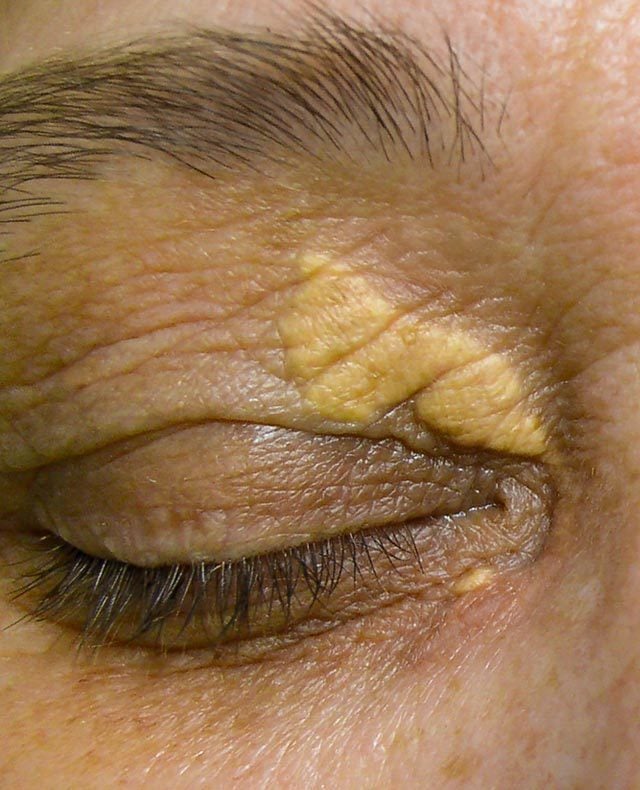Eyelid xanthelasma removal is a procedure designed to eliminate the yellowish, lipid-rich deposits that appear on or around the eyelids. This process can be approached through various methods, each with specific steps, advantages, and considerations. Understanding these can help you prepare for and navigate the Eyelid Xanthelasma Removal in Dubai effectively.
1. Diagnosis and Evaluation
Diagnosis
Before treatment begins, it is essential to accurately diagnose xanthelasma. A dermatologist or ophthalmic surgeon will typically conduct a physical examination of the eyelids. In some cases, a biopsy may be performed to confirm the diagnosis and rule out other potential conditions.
Evaluation
The specialist will evaluate the size, number, and location of the xanthelasma lesions. This assessment helps determine the most appropriate treatment method based on the individual characteristics of the lesions and the patient’s overall health.

2. Choosing the Treatment Method
Surgical Options
- Excision: Involves surgically removing the xanthelasma with a scalpel. This method is effective for larger or deeper lesions but may require stitches and has a longer recovery time.
- Cryotherapy: Uses liquid nitrogen to freeze and destroy the xanthelasma. It is less invasive than excision but may result in temporary swelling and redness.
Non-Surgical Options
- Laser Treatments: Various lasers, such as CO2, erbium, and fractional lasers, can precisely target and remove xanthelasma. Laser treatments are less invasive and generally have a shorter recovery time.
- Topical Treatments: Creams or ointments containing medications like trichloroacetic acid (TCA) or other compounds can be applied to dissolve the xanthelasma. These treatments are usually reserved for smaller lesions.
3. Pre-Treatment Preparation
Medical Assessment
Undergo a thorough medical assessment, including reviewing your medical history and current medications. Inform your specialist of any allergies or conditions that could impact the treatment.
Skin Preparation
Prepare your skin by avoiding harsh products and ensuring it is clean. Depending on the treatment, you may need to stop using certain skincare products or medications prior to the procedure.
Planning for Recovery
Arrange for transportation to and from your appointment and consider having a friend or family member assist you during the initial recovery period. Plan for any time off work or activities that may be affected by the recovery process.
4. The Procedure
Anesthesia
Most xanthelasma removal procedures are performed under local anesthesia, which numbs the area around the eyelids. In some cases, sedation may be used to help you relax during the procedure.
Performing the Removal
- Surgical Excision: The surgeon will carefully cut out the xanthelasma and may use stitches to close the wound.
- Cryotherapy: Liquid nitrogen is applied to freeze and destroy the xanthelasma.
- Laser Treatment: A laser is directed at the xanthelasma to vaporize or break down the lipid deposits.
- Topical Treatment: Medications are applied directly to the xanthelasma to dissolve it over time.
Duration
The duration of the procedure varies depending on the method used and the extent of the xanthelasma. Generally, the procedure can be completed within 30 minutes to an hour.
5. Post-Treatment Care
Immediate Aftercare
Follow the post-treatment care instructions provided by your specialist. This may include keeping the area clean, applying prescribed ointments, and avoiding sun exposure.
Recovery
- Surgical Methods: Expect some swelling, redness, and possible bruising. Follow-up visits may be required to monitor healing and remove stitches.
- Cryotherapy: You may experience redness and swelling, with a scab forming as the area heals.
- Laser Treatments: Minor redness and swelling are common. The area should gradually heal over a few weeks.
- Topical Treatments: Results develop over several weeks as the medication works to dissolve the xanthelasma.
Long-Term Care
Monitor the treated area for any signs of complications, such as infection or unusual changes. Follow your specialist’s advice for long-term skincare and maintenance.
6. Expected Outcomes
Results
Most patients see significant improvement or complete removal of xanthelasma following treatment. The success of the procedure depends on the treatment method, the extent of the xanthelasma, and individual healing responses.
Follow-Up
Attend follow-up appointments to assess the effectiveness of the treatment and address any concerns. Your specialist will provide guidance on additional treatments if necessary.
Conclusion
Understanding the process of eyelid xanthelasma removal involves recognizing the steps from diagnosis and treatment selection to post-care and expected outcomes. By familiarizing yourself with each phase of the process, you can better prepare for the procedure and support a smooth recovery. Always consult with a specialist to determine the most appropriate approach for your specific situation and ensure the best possible results.





Comments